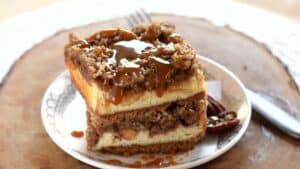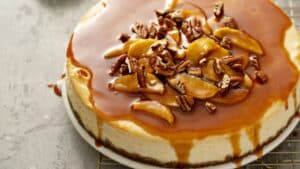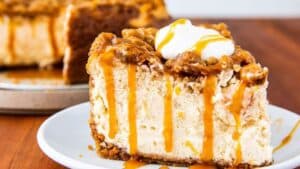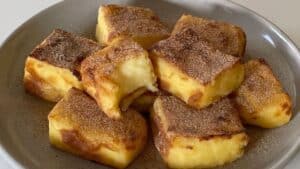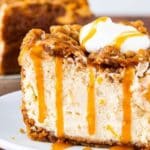You ever wake up and wish breakfast felt like a hug from yesterday’s dessert tray? Cookie dough overnight oats might just be that rare bowl where comfort meets function. It ain’t quite dessert, but it feels like it wants to be and that’s half the magic. This isn’t your average Pinterest-core oat mush, either. We’re talking the science of slow absorption, glycemic balance, protein synergy, and yes, edible cookie dough flavor. This is for chefs, nutritionists, and food R&D folk who want to elevate breakfast beyond boring.
The purpose of this article? To dissect cookie dough overnight oats in a way that blends professional culinary technique with real-world, palatable, market-savvy appeal. If you’re crafting a café menu, developing a CPG product, or just trying to make breakfast interesting for your private clients — this is your blueprint.
Why Cookie Dough? Why Overnight Oats?
Let’s face it cookie dough’s nostalgic power is nuclear. It hits the memory banks hard. According to a 2022 report by Mintel, 68% of adults in the U.S. admitted to eating raw cookie dough “at least occasionally.” That’s not a guilty pleasure. That’s a market segment.
Now slap that flavor profile on oats, and you’ve got an intersection of indulgence and wellness. Overnight oats, a staple among health-conscious consumers, have spiked in popularity. Nielsen retail data from Q1 2024 shows that refrigerated oat-based breakfast items have grown 14% YoY, especially in the 18–34 demographic.
So why mash cookie dough and oats together? Because consumers want functional food that doesn’t taste like regret. Cookie dough oats say, “I’m treating myself,” without the sugar crash. And that’s not just clever it’s marketable.
Breaking Down the Blueprint: What Makes It Cookie Dough?
You don’t just throw oats and almond milk in a jar, chuck in some chocolate chips, and call it cookie dough. That’s lazy. Cookie dough has texture, flavor layers, and a hint of rebellion. It tastes like you’re getting away with something.
Flavor Matrix
At its core, cookie dough flavor is a tightrope act between vanilla, brown sugar, butterfat, and salt. But in overnight oats, you can’t just use butter and eggs. You gotta cheat — in a smart way.
- Vanilla extract: Use real Madagascar vanilla if budget allows. It’s got depth.
- Nut butter: Cashew is king here. It mimics the mouthfeel of butter better than almond or peanut. Peanut screams “Reese’s,” not Toll House.
- Maple syrup or coconut sugar: More caramel notes than plain sugar.
- Pinch of salt: Non-negotiable. It sharpens every other flavor like a whetstone.
Texture Play
Oats soften overnight, but cookie dough needs chew. A bit of bite. So you layer in texture after the oats sit.
- Mini chocolate chips (yes, size matters — big ones make it clunky)
- Crumbled oat flour cookie or granola clusters right before serving
- Chia seeds or hemp hearts for that speckled dough appearance
Bonus trick? A whisper of almond extract. Just a drop. It gives that bakery-style roundness that tastes like a real recipe, not a health hack.
Oats: The Substrate of Nutritional Engineering
Rolled oats are the standard here, but not all oats are equal. Quick oats go mushy, steel-cut stay too firm. Regular old-fashioned oats? Goldilocks. But what else is in the bowl?
Let’s talk macronutrient ratios. The ideal composition for sustained energy should look something like this (per 1 serving):
- Carbs: 35–45g (low-glycemic preferred)
- Protein: 12–18g (use Greek yogurt, protein powder, or collagen peptides)
- Fat: 10–14g (nut butters, seeds, coconut milk)
Fiber plays the unsung hero — 6 to 8 grams keeps satiety up and blood sugar down. A 2019 meta-analysis in The Lancet tied high-fiber breakfasts to a 15% lower risk of Type 2 diabetes onset. That’s the kind of stat your marketing team wants on the label.
Layering, Not Mixing: Culinary Precision in Assembly
There’s technique here. You don’t stir everything into a slurry. You layer like a parfait. Base of oats, then liquids, then nut butter swirl, then chill. Post-fridge, you fold in chocolate chips, maybe a chopped date or two, and serve with crunch on top.
This is not just about flavor — it’s about visual cues. Those visible layers suggest complexity and indulgence. Think like a pastry chef, not a meal-prepper. The more it looks like dessert, the more likely someone’s going to eat it for breakfast and Instagram it. And that’s free marketing.
Addressing Common Misconceptions
“Isn’t it just sugary oatmeal?”
Only if you make it that way. Most cookie dough oat recipes clock around 7–10g of sugar per serving, way under the average muffin. Use unsweetened almond milk, go light on sweeteners, and lean on natural flavor. Coconut sugar spikes less than refined stuff, and stevia or monk fruit blends can smooth it out.
“Doesn’t it get soggy overnight?”
It softens, yes — but that’s the point. If texture is a concern, chia seeds can thicken without sogginess, and a stir-in of Greek yogurt before serving brings it back to life. Also, oats soaked in plant milk for 8 hours behave very differently than ones left for 48. Educate your customers, or they’ll think your recipe failed.
“Can it be high-protein?”
Yes. Use unflavored whey isolate or a clean plant protein. Vanilla flavored ones work best for taste harmony. 20g of added protein (in addition to nut butters and milk) can take the whole bowl to 30g of protein — solid for a breakfast.
Trends and Innovation: What’s Next?
Several CPG brands are already leaning into this flavor space. Oats Overnight’s “Peanut Butter Cookie Dough Cacao Crunch” is a top seller. Mush introduced a cookie dough variant in Q4 2023 that doubled their repeat order rate for that SKU compared to others.
Expect to see:
- Functional cookie dough oats: With added adaptogens like ashwagandha or lion’s mane.
- Vegan collagen boosters: As a non-dairy way to mimic the creaminess of raw dough.
- Savory-sweet variants: Think salted tahini-chocolate chip oats with miso caramel swirls.
The overlap between dessert and wellness is the next frontier in breakfast innovation. Cookie dough is just the beginning — we’re talking cheesecake oats, cinnamon roll oats, banana bread oats. It’s basically the dawn of Dessert 2.0: Guilt-free edition.
Practical Application for Food Professionals
If you’re in the restaurant world, this is a $7–$10 item with less than $1.50 in COGS. Prep is minimal, storage is easy, and it photographs beautifully. Offer it with a side of cold brew or matcha, and you’ve got a whole morning ritual on the menu.
For R&D teams, consider shelf-stable mixes where consumers add milk and chill. Or frozen cups for grab-and-go. Texture will be the biggest hurdle, but freeze-dried crunch add-ins are solving that problem fast.
For nutritionists and trainers, this is an easy sell to clients. Balanced macros, portable, pre-prepped, and hits the sweet craving without breaking the blood sugar bank.
Final Thoughts: Cookie Dough Overnight Oats, the Trojan Horse of Wellness
Here’s the thing: people don’t want to eat health food. They want to eat food that tastes like fun and just happens to be good for them. Cookie dough overnight oats sneak in under the radar — sweet, familiar, comforting. But under that cozy exterior? It’s a powerhouse of fiber, protein, and micronutrients.
As a food pro, your job is to build dishes that don’t feel like compromises. Cookie dough oats are proof that you can lead with flavor and follow with function. They’re not just a trend — they’re a format.
Get it right, and they’ll come back for breakfast, snacktime, and maybe even dessert.
And isn’t that the real goal?
Let your oats taste like rebellion. Just make sure it’s the healthy kind.


